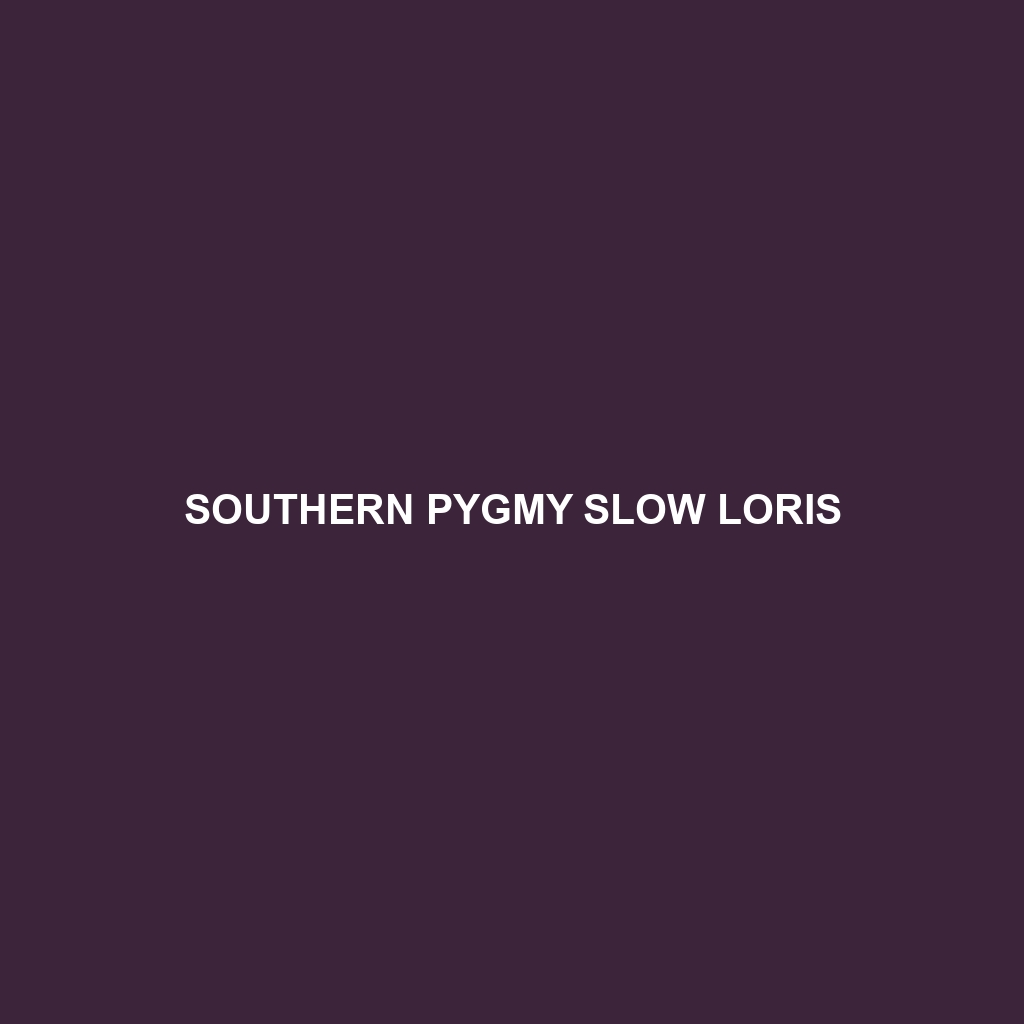Southern Pygmy Slow Loris
Common Name: Southern Pygmy Slow Loris
Scientific Name: Nycticebus pygmaeus
Habitat
The Southern Pygmy Slow Loris primarily thrives in the lush tropical rainforests of Southeast Asia, particularly in countries such as Vietnam, Laos, Cambodia, and Thailand. These lowland forests provide the humid environment and dense canopy cover essential for its survival. The species is often found in areas characterized by abundant vegetation, allowing them to remain concealed from predators and hunt effectively.
Physical Characteristics
Southern Pygmy Slow Lorises are relatively small primates, typically measuring about 7 to 10 inches in length, with a tail that is absent or very short. They exhibit a distinctive fur coat that ranges from a reddish-brown to gray, often adorned with lighter spots. Their large, round eyes are a notable feature, providing excellent night vision, and they possess a unique ability to rotate their heads significantly, aiding in their arboreal lifestyle.
Behavior
These nocturnal creatures exhibit a slow and deliberate movement pattern, which helps them avoid detection by both predators and prey. Southern Pygmy Slow Lorises are known for their social nature, often found in small groups. They communicate through various vocalizations and body language, especially during mating seasons. Their distinctive “slow” method of locomotion contributes to their name and is an evolutionary adaptation that assists in stealthy foraging.
Diet
The Southern Pygmy Slow Loris has a primarily insectivorous diet, consuming a wide range of insects, including moths and beetles. They supplement their diet with nectar, fruits, and leaves. This species is also known to have a unique feeding behavior, often using their specialized saliva to break down complex sugars in fruits, making them vital for pollination and seed dispersal in their habitat.
Reproduction
Reproductive habits of the Southern Pygmy Slow Loris typically occur during the wet season when food is more abundant. Females usually give birth to a single offspring after a gestation period of about six months. The young are cared for intensively by the mother, remaining dependent on her for several months before becoming independent. Notable behaviors include grooming, which strengthens social bonds between the mother and offspring.
Conservation Status
The Southern Pygmy Slow Loris is currently classified as “Vulnerable” by the International Union for Conservation of Nature (IUCN). Habitat loss due to deforestation, alongside illegal pet trade, poses significant threats to its survival. Conservation efforts are underway to protect their natural habitats and raise awareness about their ecological importance.
Interesting Facts
One fascinating fact about the Southern Pygmy Slow Loris is that they possess a toxic secretion in their elbow glands which they can apply to their fur. This serves as a defense mechanism against predators. Additionally, they have a unique “hug” mating ritual, where pairs will embrace each other closely before copulation.
Role in Ecosystem
The Southern Pygmy Slow Loris plays a vital role in its ecosystem by aiding in pest control and promoting plant growth through seed dispersal. As both prey and predator, they help maintain the ecological balance in their forest habitats, ensuring a rich biodiversity of flora and fauna.

